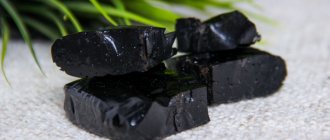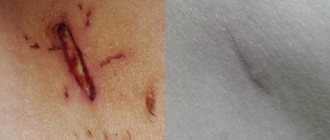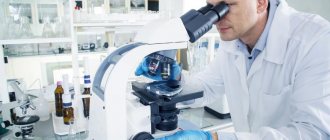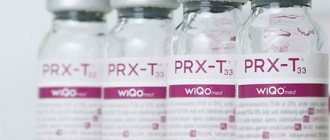Liposomes have been widely used in the field of cosmetology in recent decades. What are these substances that are present in effective skin care products?
Liposomes are transdermal biosystems that transport useful and necessary substances into epithelial cells. Recently, the term “liposomal cosmetics” has appeared in cosmetology. Cream with liposomes penetrates deeply into the layers of the epidermis and provides reliable protection of the skin from harmful effects.
Advantages
Cosmetics containing liposome systems differ in their effects from conventional care products. Conventional creams, which do not contain biologically active components, only cover the skin with a thin protective film. They do not rejuvenate the skin, do not slow down the aging process, and do not eliminate its signs. The liposomal composition of the innovative cream or gel can not only smooth out the deepest wrinkles, but also take care of the rejuvenation of the skin.
The use of liposomes is an innovation in modern cosmetology. The substances are included in the compositions of anti-aging and restorative cosmetic products. When choosing new products, it is necessary to rely on the degree of penetration of liposomes into the stratum corneum. The substances are able to overcome thick keratinized layers and nourish the skin as deeply as possible.
The liposome capsule has dimensions from 0.2 to 0.6 microns. The skin has pores of 0.09 micron. When crossing the space, the liposome is deformed and easily penetrates into the smallest capillaries. The particle acts exactly where it is needed. It easily overcomes skin barriers. The effect of many cosmetic products has been repeatedly studied under a microscope. Innovative creams fully met the expectations of cosmetologist developers.
The main advantages of lipoparticles:
- natural biological breakdown and release of active ingredients;
- excellent biocompatibility with organic human cells;
- interaction with a specific cellular structure;
- prolonged exposure;
- launching the necessary rejuvenation processes;
- non-toxic;
- no allergies or tissue irritation.
The intercellular space is filled with lipid compounds. Liposomal substances can overcome them and also penetrate through the glandular ducts. Other aqueous components of cosmetics do not cope with this task. Cosmetic creams and gels use liposomal microcapsules containing active biological ingredients. Liposomes contain anti-aging enzymes, vitamins, antiseptics, and hormonal substances.
Liposomes have been used in medicine since 1975. However, already 10 years later the first capsules began to be used in cosmetology. Dior, L'Oreal and other giants of the cosmetology industry became interested in them.
Liposomes
INTRODUCTION The main component of liposomes is phosphatidylcholine. If we want to know why liposomes should be used in cosmetics, what functional abilities they have and what benefits they have, we need to consider its basic properties. Other compounds, such as niotensides and ceramides, are less suitable for the preparation of liposomes: niotensides do not provide good quality liposomes, and ceramides are difficult to obtain in sufficient quantities and acceptable quality at affordable prices.
PHOSPHATIDYLCHOLINE Phospholipids, and especially phosphatidylcholine, do not play a significant role in the barrier function of the stratum corneum. Lipid bilayers of membranes contain only traces of phospholipids. Their main components are free fatty acids, cholesterol, triglycerides, hydrocarbons and ceramides. But deeper, in the living layers of the epidermis, phosphatidylcholine is found very often as the most important component of biological and especially cellular membranes. In addition, phosphatidylcholine is a source of phosphocholine, which is necessary for the transformation of ceramides into sphingomyelins. In this regard, phosphatidylcholine can be called a marker of living tissues, while an increase in the amount of ceramides in cells predicts their inevitable death (apoptosis) (Fig. 1).
Phosphatidylcholines of both animal and plant origin contain fatty acid residues, among which unsaturated fatty acids predominate. In soybean phosphatidylcholine, which is readily available and mainly used in cosmetic formulations, 70% of the total fatty acids are linoleic acid. Therefore, soybean phosphatidylcholine has a very low phase transition temperature, below 0°C in water-containing systems.
Rice. 1. Homeostasis of epidermal cells. The inscription at the top is “phosphatidylcholine”, inside the triangle is “homeostasis of epidermal cells”, at the bottom left is “ceramides – “death””, at the bottom right is “sphingomyelins – “life””.
Therefore, it can liquefy lipid bilayers of the stratum corneum, which can be determined by measuring the increase in transepidermal water loss (TEL) after short-term exposure. A slight increase in TPV coincides with the penetration of phosphatidylcholine and active agents contained in the same preparation into the skin. The high linoleic acid content and good penetration ability allow soy phosphatidylcholine to transport linoleic acid into the skin very effectively, helping to cure acne.
By firmly adhering to surfaces containing proteins such as keratin, phosphatidylcholine has a conditioning and softening effect known to all who use cosmetics. For example, in the past, egg yolk was often included in shampoos to soften the hair and prevent static electricity. Egg yolk is very rich in lecithin, the main component of which is phosphatidylcholine. For this mixture, it does not matter in what form phosphatidylcholine is included. When it is included in formulations, structures with double layers (bilayers) are almost always formed, since this is its most natural form. For example, phosphatidylcholine, swollen in water, spontaneously transforms into liposomes if small amounts of salts or water-soluble organic compounds are added. It has long been known that the stratum corneum, pre-treated with phosphatidylcholine, becomes more permeable to non-encapsulated substances. Therefore, liposomes are not needed to enhance the functions of phosphatidylcholine, but they greatly facilitate the preparation of drugs, since working with pure phosphatidylcholine requires a lot of experience and sometimes patience.
Phosphatidylcholine is known to promote the penetration of substances into the skin. This property is usually associated with liposomes. It is often written about liposomes that they are bubbles that better transport various substances into the stratum corneum of the skin. This is true, moreover, their conditioning effect helps the stratum corneum accumulate these substances. It has been proven that an increase in the penetration of substances into the stratum corneum is not accompanied by an increase in its permeability. Instead, substances accumulated in the stratum corneum penetrate into the deeper layers of the skin over a long period of time. Therefore, phosphatidylcholine and liposomes are very convenient means for introducing vitamins, provitamins and other substances that affect the ability to regenerate the living epidermis. In contrast, liposomes consisting of unsaturated phosphatidylcholine should be used with caution in barrier creams because they do not improve the natural barrier function of the skin, except for an indirect effect on the formation of ceramide I, which contains linoleic acid and is one of the most potent protective activating substances. barrier. To enhance skin protection, hydrogenated phosphatidylcholine should be included in cosmetic products (Fig. 2).
Rice. 2. Hydrogenated phosphatidylcholine (n = 14.16)
Hydrogenated phosphatidylcholine stabilizes normal TPR, like ceramides, when exposed to hydrophilic or lipophilic substances on the stratum corneum. Table 1 summarizes the properties of unsaturated and hydrogenated phosphatidylcholines.
Table 1. Properties of phosphatidylcholines
Hydrogenated phosphatidylcholine is the same as hydrogenated soy phosphatidylcholine, which contains mainly stearic acid and semi-synthetic compounds such as dipalmitoylphosphatidylcholine (DPPC) and distearoylphosphatidylcholine (DSPC). Due to their special properties, it is advisable to combine unsaturated and saturated phosphatidylcholines in the same cosmetic or dermatological products.
LIPOSOMES Liposomes are spherical vesicles whose membranes consist of one (unilamellar) or more (oligolamellar, multilamellar) phosphatidylcholine bilayers. Sometimes, especially in patents, they are not called liposomes, but “vesicles with an internal aqueous phase.” The size of the bubbles can vary from 15 to 3500 nm in diameter, and the shape can also vary (single and fused particles). For the same chemical composition, these parameters strongly depend on the liposome manufacturing process. Very often, drugs are metastable, that is, the bubbles change lamellarity, size and shape over time. For example, small bubbles form large ones, and vice versa. Fortunately, this usually does not affect the quality of the formulations, since the properties of phosphatidylchodines are not affected. However, stability is higher for bubble sizes between 100 and 300 nm, for example in the case of pure aqueous dispersions of highly enriched (80 - 100%) soybean phosphatidylcholine. In complex formulations containing other ingredients, their compatibility, salt concentration, amphiphilic and lipophilic substances play an important role. Therefore, it is often very difficult to prove the existence of liposomes, for example in a gel phase or cream base. Of course, liposomal formulations are very effective, especially when they consist of pure liposomal dispersions carrying lipophilic additives on the sphere membranes and/or hydrophilic additives in the internal and external aqueous phases. Intensive research is being conducted to increase the ability of liposomes to encapsulate lipids as consumers become accustomed to rich creams. Attempts are being made to add emulsifiers to liposomal dispersions to stabilize more lipids. But it is now known that the compatibility of liposomes with additional emulsifiers is limited. In addition, emulsifiers weaken the binding of phosphatidylcholines to the barrier, as a result of which phosphatidylcholine and lipids are more easily washed out of the skin. In this regard, there is only one rational solution: to use nanoparticles (“nanoemulsions” or “nanodispersions”) consisting of phosphatidylcholine and lipids instead of liposomes. The nanoparticles were discovered by observing oil droplets that could fuse with liposomes when the bilayers' ability to bind lipids was depleted. Further increases in the lipid/phosphatidylcholine ratio and the use of high-pressure homogenizers lead to the appearance of nanoparticles. Nanoparticles consist of oil droplets, as in an emulsion, surrounded by a monolayer of phosphatidylcholine. The advantage of nanoparticles is that they allow more lipids to be included in formulations and maintain stability. Therefore, then additional emulsifiers are not needed.
Liposomal dispersions based on unsaturated phosphatidylcholines are unstable to oxidation. Just like linoleic esters and glycerides, these dispersions need to be stabilized with antioxidants. If you use natural substances, you can successfully use a complex of vitamins C and E (and, accordingly, their derivatives - acetates and palmitates). In some cases, phosphatidylcholine and urea have a mutually stabilizing effect. In addition, you can add substances that neutralize the effect of heavy metal ions that form radicals - these are chelators, such as citrates, phosphonates or ethylenediaminetetraacetic acid (EDTA). In addition, unsaturated phosphatidylcholine can be replaced by saturated phosphatidylcholine, such as DPPC or hydrogenated soybean phosphatidylcholine, which is preferred due to its low cost. Due to the higher phase transition temperature, liposomal dispersions based on hydrogenated materials are more difficult to prepare and, as a rule, are used only for pharmaceutical products. An interesting new development in the field of cosmetic compositions containing soy phosphatidylcholine is dermal membrane structure (DMS) technology. DMS is a base cream containing hydrogenated soy phosphatidylcholine, sebum-compatible medium chain triglycerides (MCTs), shea butter and squalane. In addition to liposomal dispersions and nanoparticles, DMS is another means of combining phosphatidylcholine with hydrophilic and lipophilic components without emulsifiers (Figure 3). DMS is resistant to water and sweat and is therefore suitable for protecting the skin, including from the sun, without the addition of silicones or mineral oils. It is easily converted into other end products by stirring at room temperature along with the liquid lipid and/or aqueous phase.
Rice. 3. Formulations containing phosphatidylcholine, without other emulsifiers. The inscription on the top of the triangle is DMS, inside the triangle is phosphatidylcholines, at the bottom left are liposomes, and on the right are nanodispersions. Abbreviation: DMS - dermal membrane structure.
As mentioned, DMS is intended to protect the skin, but after the addition of nanoparticles and/or liposomal dispersions, it can easily be enriched with unsaturated phosphatidylcholine containing esterified linoleic acid. The resulting products are stable, have the consistency of cream and have an anti-comedogenic effect. DMS' pure creamy foundation continues to hydrate skin for smoother, firmer skin even days after use.
Liposomes, nanoparticles and DMS must be preserved. This is not so easy because phosphatidylcholine (lecithin) inactivates most common preservatives. On the contrary, preservatives should not penetrate the skin to prevent irritation and sensitization. Therefore, glycols are used for this purpose: propylene glycol, glycerin, butylene glycol, pentylene glycol, hexylene glycol, sorbitol and their mixtures. Unlike ethanol, which can be used to a limited extent, these polyols themselves have a moisturizing effect. One of the reasons for replacing phosphatidylcholine with polyglycerols and other synthetic derivatives at the beginning of work on liposomes was their hydrolytic instability in aqueous preparations over long periods of time and at high temperatures. Phosphatidylcholine, like other glycerides, when exposed to water, forms lysophosphatidylcholine and free fatty acids. But glycerol bond cleavage occurs more frequently at pH > 7, so formulations within the pH range of 5.5 to 7 are more stable. It is possible that hydrolysis depends on the concentration of additional surfactants. This is another reason to use liposomal dispersions without additional emulsifiers.
AVAILABILITY As already mentioned, liposomal dispersions are a very convenient way to reveal the multifunctionality of phosphatidylcholine in cosmetic formulations. Preliposomal liquid phases containing up to 20% or more phosphatidylcholine are commercially available, as well as liposomes in combination with carbohydrates in the form of dry powders. An interesting solution is bath oils, which, when used, form liposomal dispersions without additional emulsifiers. These compositions are based on mixtures of phosphatidylcholine, triglycerides and ethanol. When the mixtures are poured into water, liposomal particles spontaneously form, which adhere to the body and have a beneficial effect on dehydrated and sensitive skin.
APPLICATION Today, most experts in liposomal dispersions agree that liposomes do not penetrate the skin intact. It is believed that liposomes tend to become deformed and break into fragments. Therefore, their size, shape and lamellarity are not so important for use, but rather for the chemical composition of the entire composition. The multifunctionality of phosphatidylcholines has many applications. Thus, compositions with unsaturated phosphatidylcholine are more often used to stimulate skin regeneration, its rejuvenation, acne prevention and penetration of active agents - vitamins and their derivatives - into the skin. Formulations with hydrogenated phosphatidylcholine can be used to protect the skin, including from the sun, but it must be said that nanoparticles and DMS are more suitable in this regard. The main components for the production of “natural” formulations” compatible with the stratum corneum, sebum components and their functions are shown in Fig. 4.
PC—PC—phosphatidylcholine; SPF - sun protection factor NMF - natural moisturizing factor; PC-H - hydrogenated phosphatidylcholine; MeX - mineral salts; MCT—medium chain triglycerides; AA are active agents. Rice. 4. Main components of “natural” recipes. Above is the stratum corneum, below are the deeper layers of the skin. Inscriptions on the arrows from left to right: linoleic acid ceramides; barrier; sebum; Sun protection; skin hydration; gradient of mineral salts; barrier; vitamins, etc.
THE FUTURE OF LIPOSOMAL PREPARATIONS Liposomal dispersions have been shown to be not only innovative and effective cosmetic ingredients, but also very convenient for handling phosphatidylcholine. In dermatology, they will be successfully used to prevent and treat various skin diseases. Additional formulations have been developed to help overcome the factors limiting the action of liposomal factors. Table 2 provides a comparison of the properties of liposomal and complementary formulations.
Table 2. Formulations containing phosphatidylcholine
In general, membrane structures: liposomes, nanoparticles and DMS are more compatible with the structure of the skin than commonly used emulsions, that is, they do not disrupt the integrity of the lipid bilayers of the skin and are not washed out during cleansing. In accordance with modern cosmetic purposes, these formulations contain a minimum of additional components that only overload the skin. Membrane structures are attached to lipids and hydrophilic agents of the stratum corneum. It is noteworthy that phosphatidylcholine does not need to be used in large concentrations, since practice shows that these formulations are stable in small quantities. When introduced into the stratum corneum, phosphatidylcholine accumulates in it. In many cases, liposomes, nanoparticles and DMS are compatible with each other and can be used in various combinations, so these formulations are expected to be very promising in cosmetics. The future will show how much new data on the properties of phosphatidylcholine will influence scientific developments in the field of cosmetology. Source: Dr. Hans Lautenschläger. Handbook of Cosmetic Science and Technology, p. 155-163, CRC Press Taylor & Francis Group, Boca Raton (2006). Translation and editing: G.B. Bolshakova
Any copying is PROHIBITED!
Structure
The liposomal particle has membrane walls that include phospholipids and lecithin. These substances are very resistant to various negative effects of an unfavorable environment. Lecithin in liposome acts as an effective emulsifier.
Experts recommend choosing a gel with liposomes whose sizes are no more than 100-300 nm. Lecithin belongs to the phosphatidylcholines. The liposomal membrane interacts only with certain active biological substances. They absorb the liposome, and the process of phagocytosis occurs. The liposome is embedded in an organic cell, its membrane dissolves. The necessary enzymes, vitamins, acids and other useful substances end up inside the cell.
Types of lysosomes
There are two types of lysosomes. Primary lysosomes form near the Golgi apparatus and contain unactivated enzymes.
Secondary lysosomes, or phagosomes, have activated enzymes that directly interact with broken down biopolymers. As a rule, lysosomal enzymes are activated when the pH changes to the acidic side.
Lysosomes are also divided into:
- heterolysosomes - digest substances captured by the cell by phagocytosis (solid particles) or pinocytosis (liquid absorption);
- autolysosomes - designed to destroy their own intracellular structures.
Capabilities of liposomes
Inside the liposome capsules there is a composition of unstable biological compounds. The shell reliably protects these substances during transport into the tissue. The liposome membrane is very close in structure to the cell membrane. That is why the lipoparticle is easily integrated into cell walls.
- Thanks to the synthetic microcapsule, the enzymes necessary for the skin are not destroyed in the upper layers of the epidermis, but are delivered to its deepest layers. As a result, unchanged biosubstances from the particle effectively smooth out wrinkles and rejuvenate the skin. The effect of using an innovative anti-wrinkle cream or gel can be noticed almost immediately after application.
- Liposomes can deliver inorganic ions, coenzyme, vitamins, and low molecular weight compounds. All these substances provide skin rejuvenation. Liposomes in cosmetics are indispensable for achieving high effects (restorative and rejuvenating products).
- The liposome retains the vitamin E needed by the skin unchanged. Without the help of a liposome shell, this vitamin is oxidized already in the upper layer of the dermis. It is negatively affected by free radicals. The use of liposomes allows vitamin E, along with other important components, to be delivered intact and intact into the depths of the epidermis.
At its core, a liposome is a universal carrier that scientists, doctors and cosmetologists have been developing for quite some time. You can also place in it components of the cream that are too inert, substances whose smell cannot be masked by fragrance, or components that evaporate quickly. The discovery in the form of a liposome made it possible to deliver any biological substances deep into the skin.











